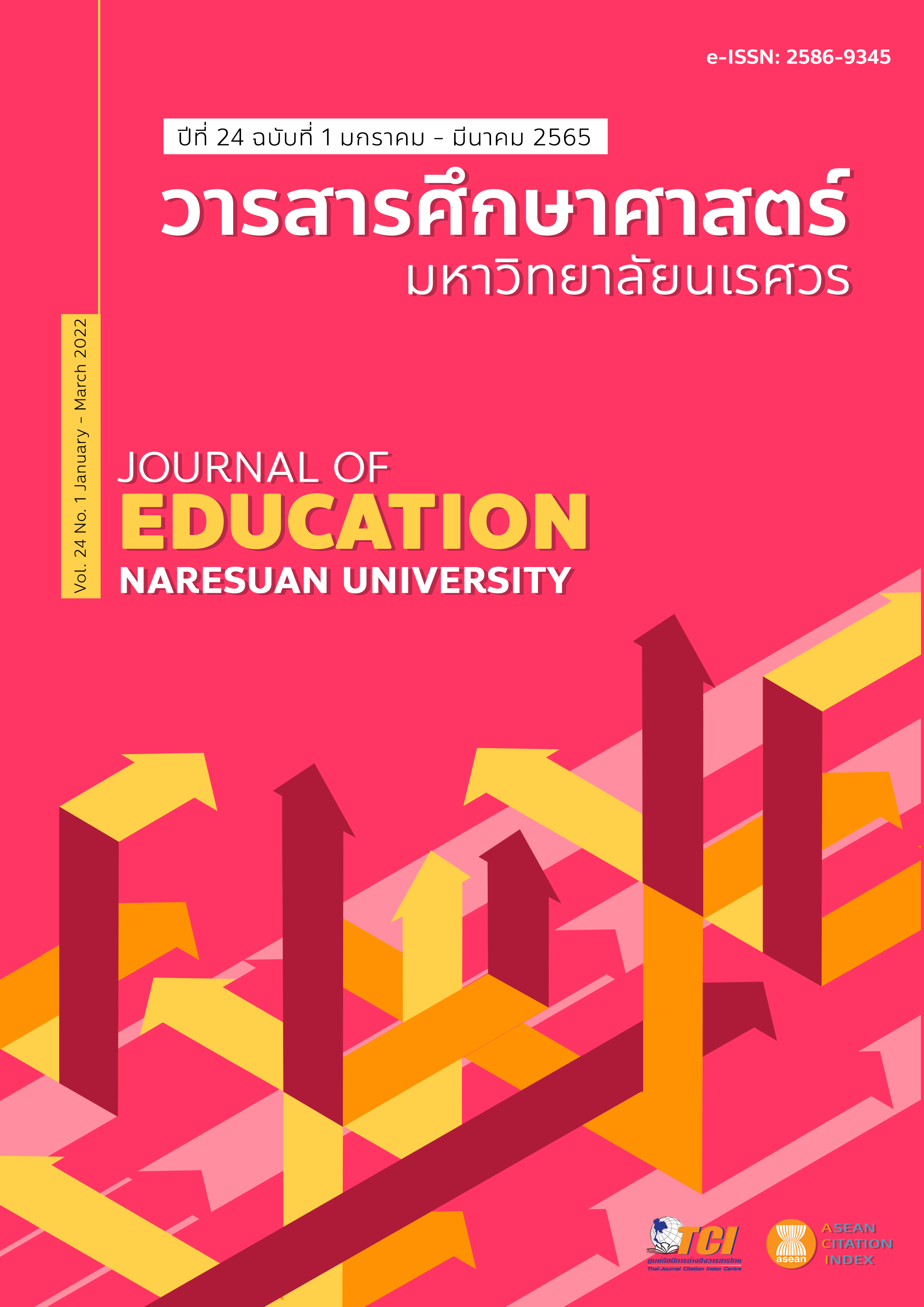THE DEVELOPMENT OF COGNITIVE DIAGNOSTIC TEST IN COVALENT MOLECULES: AN APPLICATION OF G-DINA MODEL การพัฒนาแบบสอบวินิจฉัยทางพุทธิปัญญา เรื่อง โมเลกุลโคเวเลนต์: ประยุกต์ใช้โมเดลจีดีไอเอ็นเอ
Main Article Content
Abstract
Recent student assessments focus on summative evaluation which resulted in most students lacking
the information needed to improve themselves. For this reason, researchers developed a cognitive diagnostic test to diagnose students to determine which parts they have achieved mastery and which are the ones they have not. This research aims to use that framework to develop a cognitive diagnostic test in covalent molecules topics. The quality of cognitive diagnostic test is examined by content validity, reliability, item difficulty and item discrimination. The sample is 100 grade ten students. The result of diagnostic analysis obtained by using G-DINA model found that students mostly achieved mastery in the identification of covalent molecule shape and non mastery in the properties for identification of boiling and melting point of covalent molecules.
Article Details

This work is licensed under a Creative Commons Attribution-NonCommercial-NoDerivatives 4.0 International License.
The owner of the article does not copy or violate any of its copyright. If any copyright infringement occurs or prosecution, in any case, the Editorial Board is not involved in all the rights to the owner of the article to be performed.
References
Basokcu, T. O., Ogretmen, T., & Kelecioglu, H. (2013). Model data fit comparison between DINA and G-DINA in cognitive diagnostic models. Education Journal, 2(6), 256-262.
Bloom, B. S. (1971). Handbook on formative and summative evaluation of student learning. New York: McGraw-Hill.
Chaimongkol, N. (2017). Cognitive diagnostic assessment. Social Science Research Association of Thailand, 4(1), 14-23. [in Thai]
Chuephangam, M. (2001). Analysis of misconception in chemistry of mathayomsuksa 5 students (Master thesis). Chiang Mai: Chiang Mai University. [in Thai]
De La Torre, J. (2009). DINA model and parameter estimation: A didactic. Journal of Educational and Behavioral Statistics, 34(1), 115-130.
De La Torre, J., & Minchen, N. (2014). Cognitively diagnostic assessments and the cognitive diagnosis model framework. Psicologia Educativa, 20, 89-97.
Kanjanawasee, S. (2013). Classical test theory. Bangkok: Chulalongkorn University Press. [in Thai]
Miller, M. D., Linn, R. L., & Gronlund, N., E. (2009). Measurement and Assessment in Teaching (10th ed.). Upper Saddle River, NJ: Pearson Education.
Ministry of Education. (2002). The National Education Act of 1999, as amended (No.2) Act 2002 and related regulations and compulsory education Act 2002. Bangkok: Express Transportation Organization of Thailand (ETO). [in Thai]
Office of Teacher Development and Basic Education Personnel. (2011). Teacher competency assessment manual. Bangkok: Office of the Basic Education Commission. [in Thai]
Pasiphol, C. (2016). Measuring and evaluating learning outcomes. Bangkok: Chulalongkorn University Press. [in Thai]
Peterson, R. F, & Treagust, D. F. (1989). Grade-12 students’ misconceptions of covalent bonding and structure. Journal of Chemical Education, 66(6), 459-460.
Susheva, S. (1995). The Development of diagnostic method for detecting mathematical misconception (Doctoral dissertation). Bangkok: Chulalongkorn University. [in Thai]
Urasin, S., & Supasorn, S. (2011). Comparing students’ conceptions of chemical bonds prior and after the implementation of paper-based T5 learning model. KKU Research Journal, 1(1), 38-57. [in Thai]
Wang, W., Song, L., Chen, P., Meng, Y., & Ding, S. (2015). Attribute-level and pattern-level classification consistency and accuracy indices for cognitive diagnostic assessment. Journal of Educational Measurement, 52, 457-476.


